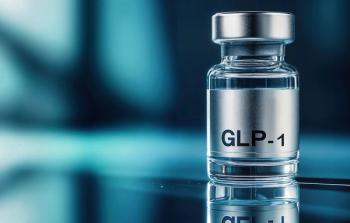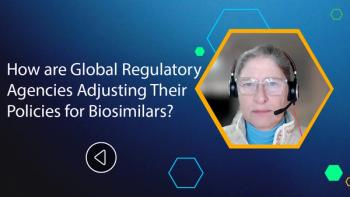Key Takeaways
- Enpatoran shows promising efficacy in lupus rash
Merck’s investigational oral TLR7/8 inhibitor significantly improved skin disease activity in patients with cutaneous and systemic lupus erythematosus, with up to 91.3% achieving CLASI-50 response by week 24.
- Statistically significant dose-response observed
The Phase II WILLOW trial met its primary endpoint in Cohort A, demonstrating a dose-dependent, clinically meaningful reduction in CLASI-A scores by week 16.
- Favorable safety and biomarker response profile
Enpatoran was well-tolerated with no new safety signals and showed sustained reductions in interferon gene signature scores, supporting its mechanism targeting the TLR7/8 pathway.
Results from the Phase II WILLOW study show that enpatoran, Merck’s investigational oral TLR7/8 inhibitor, demonstrated a statistically significant dose-response and clinically meaningful reduction in disease activity in patients with cutaneous lupus erythematosus (CLE) and systemic lupus erythematosus (SLE) with active lupus rash. The findings, from Cohort A of the study will be presented at the 16th International Congress on Systemic Lupus Erythematosus.1
Could Enpatoran Offer a New Treatment Path for Lupus Patients?
“Lupus can make navigating everyday life difficult,” said Jan Klatt, head, development unit, neurology & immunology, healthcare business, Merck, in a press release. The skin manifestation, known as lupus rash, often comes with persistent itching, which can lead to scarring and hair loss. This can significantly impact the physical, emotional and social well-being of those living with lupus, underscoring the urgent need for effective treatments. We are encouraged by the WILLOW results, where we observed clinically meaningful efficacy with a favorable safety profile in people living with lupus rash. Based on these results, discussions with health authorities on a global Phase III program with enpatoran are underway.”
WILLOW Study Design and Goals
- The randomized, double-blind, placebo-controlled proof-of-concept and dose-finding WILLOW trial evaluated the efficacy and safety of enpatoran in 456 patients with CLE and SLE.
- The study included two cohorts: Cohort A enrolled patients with CLE or SLE with active lupus rash, while Cohort B focused exclusively on patients with active SLE.
- The primary endpoint for Cohort A was the change from baseline in the Cutaneous Lupus Erythematosus Disease Area and Severity Index Activity (CLASI-A) score at week 16. Cohort B’s primary endpoint was dose response.1,2
Key Efficacy Outcomes from Cohort A
- By week 16, up to 91.3% of patients in Cohort A receiving enpatoran achieved a CLASI-50 response (≥50% improvement from baseline), and 60.9% achieved a CLASI-70 response (≥70% improvement), compared with 38.5% and 11.5%, respectively, in the placebo group.
- Enpatoran also led to a sustained reduction in interferon gene signature scores starting at week two and continuing through week 24.
- The treatment was well-tolerated, with a manageable safety profile and no new safety signals reported.
Mixed Results in Cohort B and Next Steps
While cohort B failed to meet its primary endpoint, Merck noted that promising efficacy was seen in prespecified subgroups, with a full data readout expected at the European Alliance of Associations for Rheumatology Congress.1
Lupus Prevalence and Unmet Needs
According to the Lupus Foundation of America, approximately 1.5 million people in the United States are living with some form of the disease. That number rises to around five million globally. Although the disease primarily affects women of childbearing age—accounting for 90% of all cases—it can also affect men, children, and teenagers. Most diagnoses occur between the ages of 15 and 44 years. Lupus is two to three times more prevalent in African American, Hispanic/Latina, Asian American, Native American, Alaska Native, Native Hawaiian, and other Pacific Islander women.
Estimates suggest that 10% to 15% of people with lupus will die from complications. A study by the Lupus Foundation of America found that lupus ranked among the top 20 leading causes of death in females aged 5 to 64 years.3
“These new findings offer promising evidence that, with enpatoran, we may be able to advance outcomes, which remain suboptimal for most patients,” said Eric Morand, professor, Monash University, Monash Health, principal investigator of the trial, in the press release. “The data from the WILLOW study further our understanding of TLR7/8 inhibition in SLE and CLE, which is a novel mechanism of action that may offer new hope for patients.”
References
1. Merck Presents Positive Phase 2 Data for Enpatoran Demonstrating Reduction in Disease Activity in Patients with Cutaneous Lupus Erythematosus (CLE) and Systemic Lupus Erythematosus (SLE) with Active Lupus Rash. BusinessWire. Ay 21, 2025. Accessed May 21, 2025. https://www.businesswire.com/news/home/20250521318757/en/Merck-Presents-Positive-Phase-2-Data-for-Enpatoran-Demonstrating-Reduction-in-Disease-Activity-in-Patients-with-Cutaneous-Lupus-Erythematosus-CLE-and-Systemic-Lupus-Erythematosus-SLE-with-Active-Lupus-Rash
2. The WILLOW Study With M5049 in SLE and CLE (SCLE and/or DLE) (WILLOW). Clinicaltrials.gov. Accessed May 21, 2025. https://clinicaltrials.gov/study/NCT05162586
3. Lupus Facts and Statistics. Lupus Foundation of America. Accessed May 21, 2025. https://www.lupus.org/resources/lupus-facts-and-statistics






